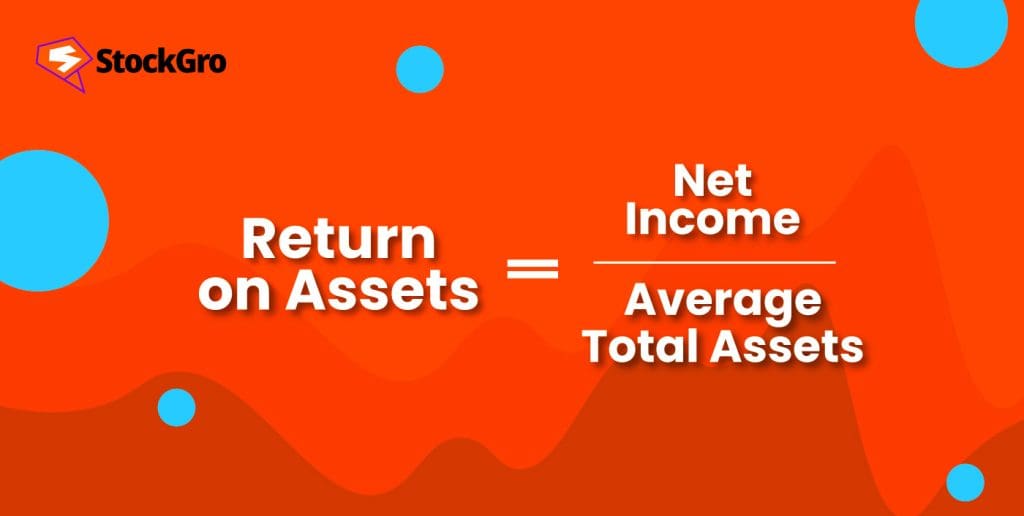
Return on assets (ROA) is a financial analysis yardstick which plays a vital role in measuring the effectiveness of investments in earnings by a company. It is usually computed as a percentage and it indicates the efficiency of the management as it discloses what profit has been earned for every rupee’s worth of assets.
Equity investors and stakeholders must take time to master the essence of the return on assets ratio as it gives an understanding of how effective their companies can be in terms of operations and their prospects for being continuously profitable.
Must read: Unlocking financial insights: The power of ratio analysis
What is the return on assets?
ROA is an indicator that measures how well businesses use their total assets to maximise profits. It is calculated as net income divided by average total assets.
Net income in turn represents financial and operational income received by any given entity during its fiscal year. However, total assets represent the cumulative value of all financial and operational resources owned by an entity, encompassing both current and long-term assets, which reflect the company’s investment in its operational capacity and future revenue potential.
ROA serves as a guide to those investing, on what they should do and it also helps the management in finding out where they can make improvements so as to have better business choices.
The return on total asset ratio formula
The return on assets formula is a straightforward yet powerful tool in financial analysis. It is expressed as:
ROA=Net IncomeTotal Assets100
Each component of the formula plays a critical role in determining the ROA:
Net income: This is known as net earnings after taking out all the costs, taxes, and expenses from revenues. This represents the actual amount available to shareholders as profit thus showing how profitable a company is.
Total assets: This all-inclusive term includes everything that a company possesses and which has value and can be converted into cash. Total assets encompass both current assets and non-current assets. Essentially, total assets represent the economic resources of a company and are a critical indicator of its financial strength and capacity to generate future revenues.
Net income divided by total assets yields a percentage that indicates how many rupees per asset each firm produces for its internal purposes. A higher number means higher efficiency and profitability.
You may also like: A simple guide to understanding NAV in mutual funds
Calculating return on assets – Example
Using Nestle India Ltd, a key player in the FMCG industry as an example, will bring out the practical application of the return on asset (ROA) formula.
| Particulars | As of 31 March 2024(₹ in million) | As of 31 March 2023(₹ in million) |
| Total assets | 105,230.6 | 89,787.4 |
| Net income | 39,328.4 | 23,905.2 |
Source: Nestle India Ltd
For the period ended as of 31 March 2024:
ROA=39,328.4105,230.6100=37.37%
For the period ended as of 31 March 2023:
ROA=23,905.289,787.4100=26.62%
This example provides a basic understanding of how to calculate the return on assets of a company.
Interpreting return on assets
Defining a “good” return on assets (ROA) can be quite subjective as it varies greatly by industry. Typically, this shows that a company is using its assets in order to yield more profit at a higher ROA percentage. Nevertheless, what should be considered a good ROA depends upon the industry due to differences in capital intensities as well as business models.
Moreover, when trying to compare the ROA between technology companies and utility companies for instance; it may be noted that technology firms tend to have higher levels of ROA compared to public utility corporations because they need fewer physical assets in their operations. To make accurate comparisons among companies based on their ROAs however, most often these improvements will become insignificant unless done within an industry or sector.
Nonetheless, despite its usefulness, there are limitations of ROA. It does not take into account the age or condition of assets which may affect the efficiency thereof. Further still, however; firms can manipulate their ROAs via sales activity or restructuring activities which might not indicate operational effectiveness.
Like others, some people wrongly believe that ROA alone is enough to determine a company’s performance at large. While being a useful metric though; it must be considered alongside other financial ratios plus analysis before making holistic investment decisions.
Further reading: Understanding the P/E ratio
Bottomline
Return on assets (ROA) is one of the main financial ratios that determine how effectively an organisation uses its available resources to generate profits. ROA provides stakeholders with information about whether management uses the firm’s resources efficiently enough to maximise profits by looking at net income concerning total assets.
Understanding and effectively utilising ROA can empower investors and management alike, providing a clearer picture of a company’s operational success and guiding smarter business decisions for sustainable growth and profitability.
FAQs
How do you interpret ROA and ROE?
Return on assets (ROA) measures how effectively a company uses its assets to generate profit, indicating operational efficiency. Return on equity (ROE) assesses how well a company uses shareholders’ investments to earn income, reflecting financial leverage and profitability. Both ratios are crucial for evaluating management’s effectiveness and a company’s financial health compared to industry peers.
What are the most important components of ROA?
The most important elements of return on assets (ROA) are net income and total assets. Net income is after-tax profits, indicating a company’s earnings efficiency. All these resources included, thus represent total assets, showing their economic significance hence indicating the level of investment done by the firm. These figures show how well a company turns its asset base into earnings and are therefore essential indices for operational efficiency.
What is the difference between ROI and ROA?
It defines ROI as gain or loss made on an investment relative to cost expressed as a percentage i.e., overall investment performance summary. The return on assets (ROA) is very specific about how much value do company’s assets bring about through profit for it focusing mainly at operational efficiencies. While ROI is broader and can apply to any investment, ROA is more focused on assessing a company’s asset utilisation.
Is higher ROE good or bad?
A higher return on equity (ROE) is generally considered good as it indicates that a company is effectively using shareholders’ equity to generate profits. It suggests strong financial performance and potentially higher returns for investors. However, excessively high ROE may result from high debt levels, which could pose risks. Therefore, it’s important to analyse ROE in the context of a company’s financial structure and industry norms.
What if ROA is negative?
If ROA is negative then this means that the company does not receive any profits from its asset base hence incurs losses. This scenario demonstrates inefficiencies within operations and may indicate poor management decisions, declining sales or high costs among other things. A negative ROA calls for further investigations to determine what caused it and strategies aimed at improving the utility of related assets thus reversing the current situation.

